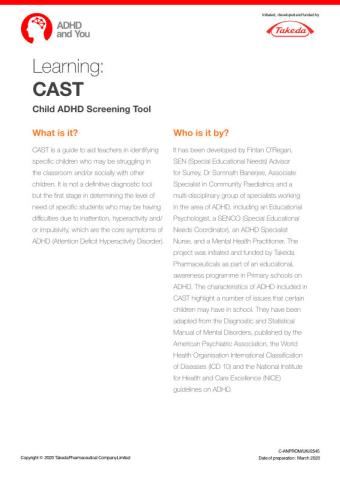What causes ADHD?
 ADHD is a well-recognised developmental disorder that may result from a number of risk factors. It is often inherited, and genetic factors can have an influence in the causation of the majority of students with ADHD. It tends to run in families and there is an increased frequency of ADHD in first-degree relatives of students with ADHD.
ADHD is a well-recognised developmental disorder that may result from a number of risk factors. It is often inherited, and genetic factors can have an influence in the causation of the majority of students with ADHD. It tends to run in families and there is an increased frequency of ADHD in first-degree relatives of students with ADHD.
 Other risk factors include low birth weight, smoking, taking opioids or drinking alcohol during pregnancy, brain injury and lack of oxygen at birth, as well as some conditions such as epilepsy.
Other risk factors include low birth weight, smoking, taking opioids or drinking alcohol during pregnancy, brain injury and lack of oxygen at birth, as well as some conditions such as epilepsy.
How many students are affected?
ADHD is estimated to affect about 2–5% (around 1 in 30) students at school.* The ‘core symptoms’ are usually present before the student is 12 years of age and can persist throughout their school life.
ADHD is more common in boys than girls (by 5:1). In some cases the condition can seem to affect genders in different ways. Though both can have attentional problems, boys are often reported as exhibiting overactive features and as a result can be perceived as more difficult to manage. Though girls with ADHD can exhibit hyperactive and impulsive symptoms, a number with inattentive symptoms are harder to detect in busy classrooms. As a result, their needs are often overlooked.
*In a non-selective mainstream school

Resources for download
Useful Links
Patient support organisations
- UKAP – the UK ADHD Partnership – https://www.ukadhd.com
- ADHD Foundation – Schools – https://adhdfoundation.org.uk/
- Young Minds – ADHD and mental health – https://www.youngminds.org.uk/parent/a-z-guide/adhd/
- The National Attention Deficit Information and Support Service (ADDISS) – https://www.addiss.co.uk
- Scottish ADHD coalition – https://www.scottishadhdcoalition.org
Professional organisations
- National Association for Special Educational Needs (NASEN) – https://www.nasen.org.uk
- National Health Service – Overview ADHD – https://www.nhs.uk/conditions/attention-deficit-hyperactivity-disorder-adhd/
- National Institute for Health and Care Excellence (NICE) guideline NG87 – Information for the public – https://www.nice.org.uk/guidance/ng87/informationforpublic
You are now leaving www.adhdandyou.co.uk. You will be re-directed to an external website. Takeda accepts no responsibilty for the content of other websites.
